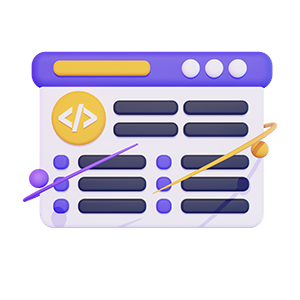Innovation-driven Engineering
Engineered for the Future, Designed for Today
Pioneering AI/ML solutions, cloud engineering, and modern user experiences to transform how enterprises operate, innovate, and grow.
Our Engineering Core Principles
At Ramco, we're guided by these engineering principles that shape how we build and deliver products

AI-Driven Intelligence
We harness the power of Artificial Intelligence and Machine Learning to automate processes, drive insights, and deliver predictive outcomes across the enterprise.

Composable Architecture
Our platforms follow a modular, API-first approach, enabling agile deployment, seamless integration, and scalable innovation—tailored to changing business needs.

DevSecOps Culture
Security is not a checkpoint—it’s continuous. Our DevSecOps model embeds security into every phase of the software lifecycle, enabling safe and rapid delivery.

Cloud-Native & Resilient
Built for the cloud, our systems are elastic, resilient, and self-healing—ensuring high availability, global scalability, and fast disaster recovery.
Featured Articles
From Pixels to Prompts: How a Decade of Design Taught Me That AI Can’t Replace Creativity, Curiosity and Empathy
Let’s be honest — AI is the word of the year. Everywhere you look, it’s the same buzz: “AI is going to take our jobs.

Scalable and Searchable Audit Trail with Elasticsearch: Ramco’s Modernized Approach
In an era where auditability, transparency, and compliance are critical, Ramco is modernizing its systems with a scalable and intelligent audit trail architecture.

Modernizing Bulk Processing
Ramco Applications had the challenge of processing for high volume wherein the processing time was high and had the limitation of processing only one at a time as the entire logic and processing was happening in the database layer.
Agile Practice
The Twin Pillars of Agile Success: Definition of Ready and Definition of Done in Scrum
Anand P
Jun 5, 2025
5 min read

In the fast-paced world of Agile development, teams often struggle with unclear requirements, incomplete deliverables, and endless cycles of rework. Two critical concepts that can transform your Scrum process from chaotic to streamlined are the Definition of Ready (DoR) and Definition of Done (DoD). These seemingly simple checklists serve as quality gates that ensure your team delivers value consistently and efficiently.
Understanding the Definition of Ready (DoR)
The Definition of Ready is a shared understanding between the Product Owner and the Development Team about what criteria must be met before a Product Backlog Item (PBI) can be considered ready for Sprint Planning. Think of it as a pre-flight checklist that ensures your team doesn't take off with incomplete or unclear requirements.
Why DoR Matters
Without a clear Definition of Ready, teams frequently encounter the "ready, fire, aim" syndrome. Developers start working on poorly defined stories, leading to confusion, assumptions, and ultimately, deliverables that don't meet expectations. The DoR acts as a filter, ensuring only well-prepared work enters the sprint.
Essential Elements of a Strong DoR
A comprehensive Definition of Ready typically includes:
Clarity and Completeness: The user story is written in clear, understandable language with well-defined acceptance criteria. All necessary details are captured, and there are no ambiguous requirements that could lead to different interpretations.
Dependencies Identified: All external dependencies, whether on other teams, systems, or third-party services, are clearly identified and resolved or have a clear resolution path.
Testability: The story includes clear acceptance criteria that can be verified through testing. The team understands what "done" looks like for this particular item.
Sizing and Estimation: The story has been estimated by the team and fits within the sprint capacity. If it's too large, it should be broken down into smaller, manageable pieces.
Technical Feasibility: The team has reviewed the technical approach and confirmed the story is technically feasible with the current architecture and resources.
Sample Definition of Ready Checklist
- User story follows the INVEST criteria (Independent, Negotiable, Valuable, Estimable, Small, Testable)
- Acceptance criteria are clearly defined and testable
- Story has been estimated and is small enough to complete in one sprint
- All dependencies have been identified and resolved
- Mockups or wireframes are available (if applicable)
- Technical approach has been discussed and agreed upon
- Product Owner is available for clarification during the sprint
Understanding the Definition of Done (DoD)
The Definition of Done represents the shared understanding of what it means for work to be complete. It's the quality standard that ensures every increment of work meets the team's standards for potentially shippable functionality.
The Strategic Importance of DoD
The Definition of Done serves multiple critical functions in the Scrum framework. It creates transparency by establishing clear expectations for quality and completeness. It ensures consistency across all team members and sprints, preventing the dreaded "works on my machine" syndrome. Most importantly, it builds trust with stakeholders by guaranteeing that completed work meets predetermined quality standards.
Building a Comprehensive DoD
An effective Definition of Done typically encompasses several layers of completion:
Code Quality Standards: This includes code reviews, adherence to coding standards, proper documentation, and automated testing coverage. The code should be clean, maintainable, and follow the team's established patterns and practices.
Testing Requirements: All relevant tests should be written and passing, including unit tests, integration tests, and user acceptance tests. The feature should be tested across different browsers, devices, or environments as appropriate.
Documentation and Knowledge Sharing: Relevant documentation should be updated, including user guides, technical documentation, and knowledge base articles. The team should ensure that knowledge about the implementation is shared appropriately.
Deployment and Infrastructure: The work should be deployable to production environments, with all necessary configuration and infrastructure changes completed and tested.
Sample Definition of Done Checklist
- All acceptance criteria have been met and verified
- Code has been reviewed and approved by at least one other team member
- Unit tests written and passing with minimum 80% coverage
- Integration tests written and passing
- User acceptance testing completed and approved by Product Owner
- Code merged to main branch
- Documentation updated (technical and user-facing)
- Feature deployed to staging environment and tested
- No critical or high-priority bugs identified
- Performance benchmarks met
- Security review completed (if applicable)
- Accessibility standards met (if applicable)
The Symbiotic Relationship Between DoR and DoD
The Definition of Ready and Definition of Done work together to create a seamless flow from ideation to delivery. The DoR ensures that only well-prepared work enters the development pipeline, while the DoD ensures that work leaving the pipeline meets quality standards. This relationship creates several benefits for Scrum teams.
Reduced Waste and Rework: When stories are truly ready before development begins, teams spend less time on clarification, assumption-based development, and rework. The clear exit criteria provided by the DoD prevent incomplete work from being considered finished.
Improved Predictability: Teams can more accurately estimate and plan when they know exactly what ready means and what done requires. This leads to more reliable sprint commitments and better forecasting.
Enhanced Quality: The dual quality gates ensure that both the input (DoR) and output (DoD) of the development process meet high standards, resulting in better overall product quality.
Better Team Alignment: Both definitions create shared understanding and common language around quality and completion, reducing conflicts and misunderstandings.
Implementing DoR and DoD in Your Team
Successfully implementing these definitions requires careful consideration and team buy-in. Start by collaborating with your entire Scrum team to create initial versions of both definitions. Include the Product Owner, Scrum Master, and all Development Team members in this process to ensure everyone's perspective is considered.
Begin with a basic version and evolve over time based on your team's experience and changing needs. What works for one team may not work for another, so customize your definitions to fit your specific context, technology stack, and organizational requirements.
Make your definitions visible and easily accessible to all team members. Consider posting them in your team workspace, including them in your project documentation, or adding them to your project management tool.
Regularly review and refine your definitions during retrospectives. Ask questions like: Are our current definitions helping or hindering our progress? What items should we add or remove? How can we make our definitions more effective?
Common Pitfalls and How to Avoid Them
Many teams encounter challenges when implementing DoR and DoD. One common mistake is creating definitions that are too rigid or bureaucratic. Remember, these are tools to help your team, not obstacles to overcome. Keep them practical and focused on real value.
Another pitfall is creating definitions that are too vague or generic. Statements like "code should be good quality" don't provide actionable guidance. Be specific about what quality means in your context.
Some teams also struggle with enforcement. Having great definitions is worthless if they're not consistently applied. Make adherence to DoR and DoD part of your team's working agreement and review them regularly.
Measuring the Impact
To understand the effectiveness of your DoR and DoD, track relevant metrics over time. Monitor the number of stories that get blocked or returned due to lack of readiness. Measure the amount of rework required after stories are marked as done. Track your team's velocity and whether it becomes more predictable after implementing these definitions.
Quality metrics are also important. Monitor the number of bugs found in production, customer satisfaction scores, and technical debt accumulation. These indicators will help you understand whether your definitions are truly improving your delivery process.
Conclusion
The Definition of Ready and Definition of Done are more than just checklists—they're powerful tools that can transform your Scrum team's effectiveness. By ensuring that work is properly prepared before development begins and meets quality standards before being considered complete, these definitions create a foundation for predictable, high-quality delivery.
Remember that implementing DoR and DoD is not a one-time activity but an ongoing process of refinement and improvement. Start simple, get your team's buy-in, and evolve your definitions based on real experience and feedback.
When properly implemented, the Definition of Ready and Definition of Done become invisible facilitators of your team's success, enabling you to focus on what matters most: delivering valuable software that delights your users and stakeholders. The investment in creating and maintaining these definitions will pay dividends in reduced waste, improved quality, and increased team satisfaction.
Take the time to establish clear, practical definitions for your team. Your future self—and your stakeholders—will thank you for the clarity, consistency, and quality that these simple but powerful tools provide.

Anand P
CTO of Logistics and Senior Vice President – Technology
Reimagining platform engineering for Ramco Systems, He works with both the platform engineering team and logistics product development team, gaining perspectives from both sides.
Share this article
Shape the Future with Ramco
We're looking for passionate individuals to join our growing team. Explore opportunities that allow you to make an impact and grow your career in a supportive environment.
View All Open Positions



